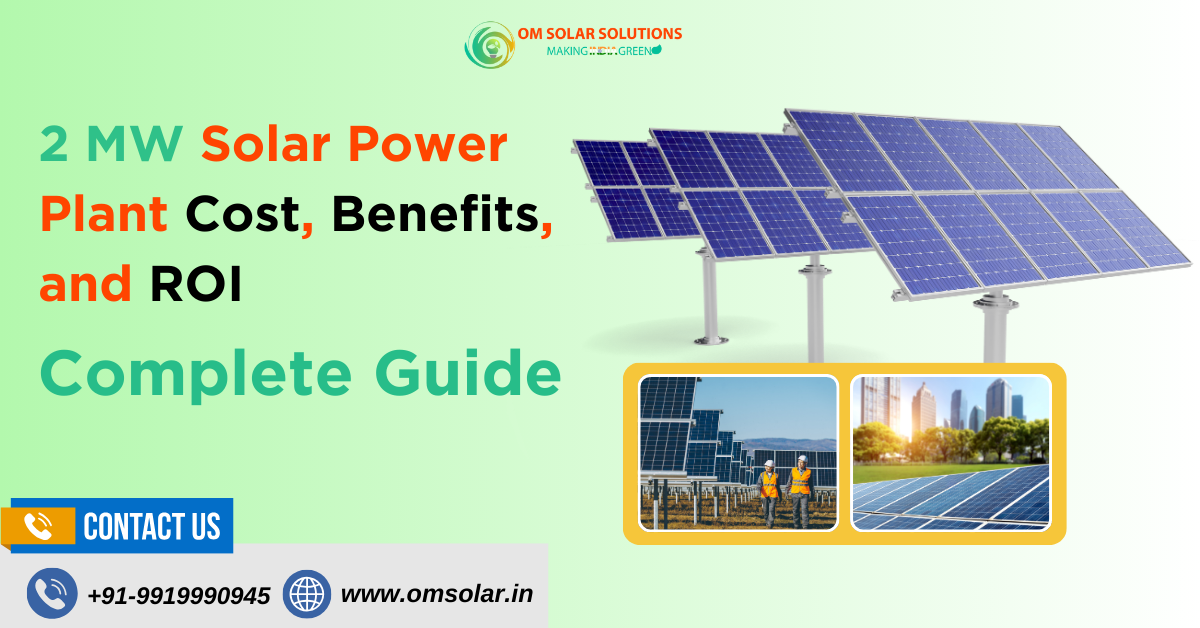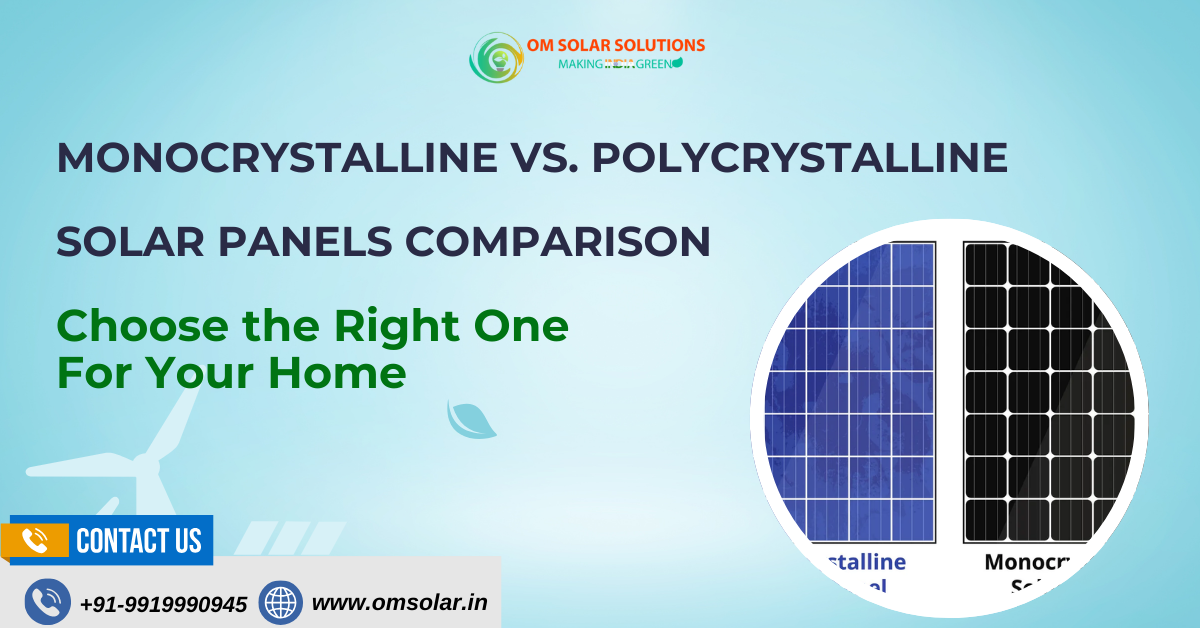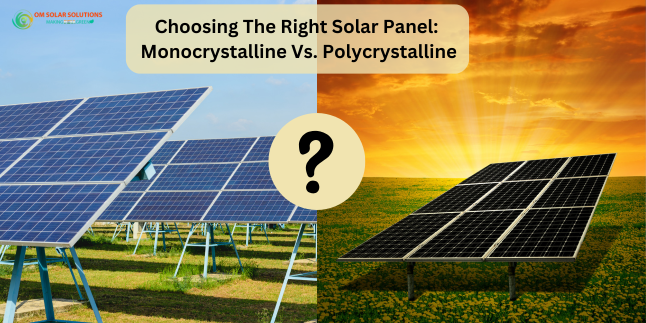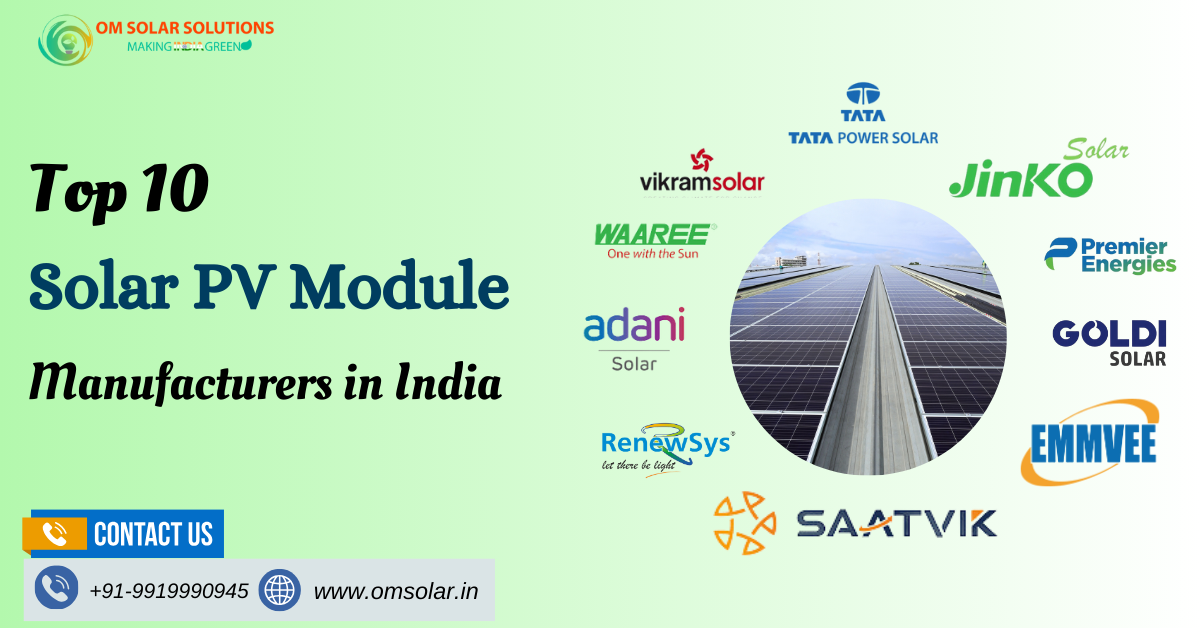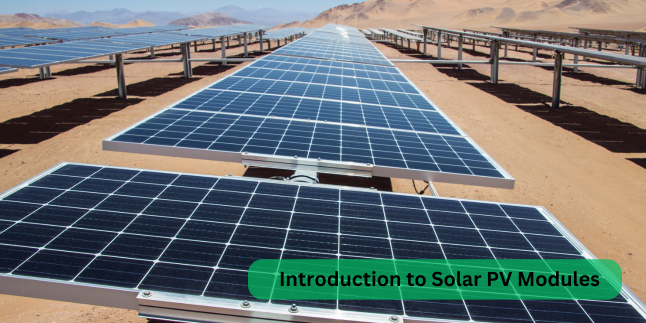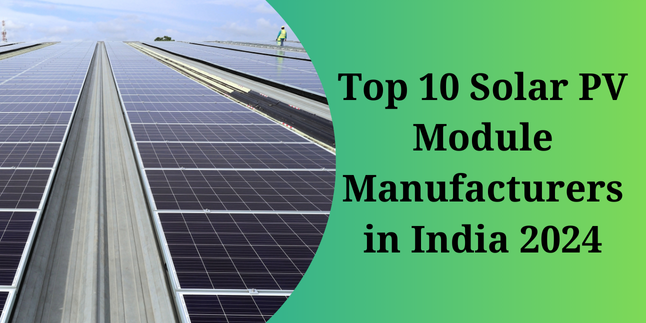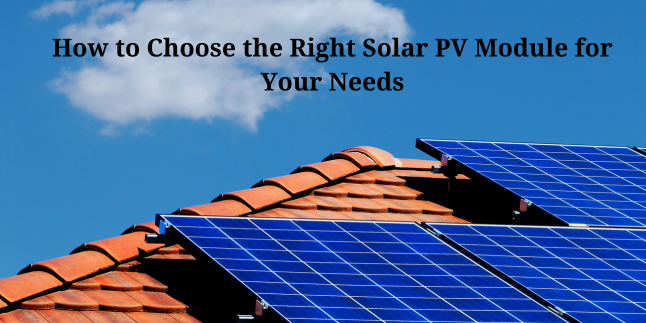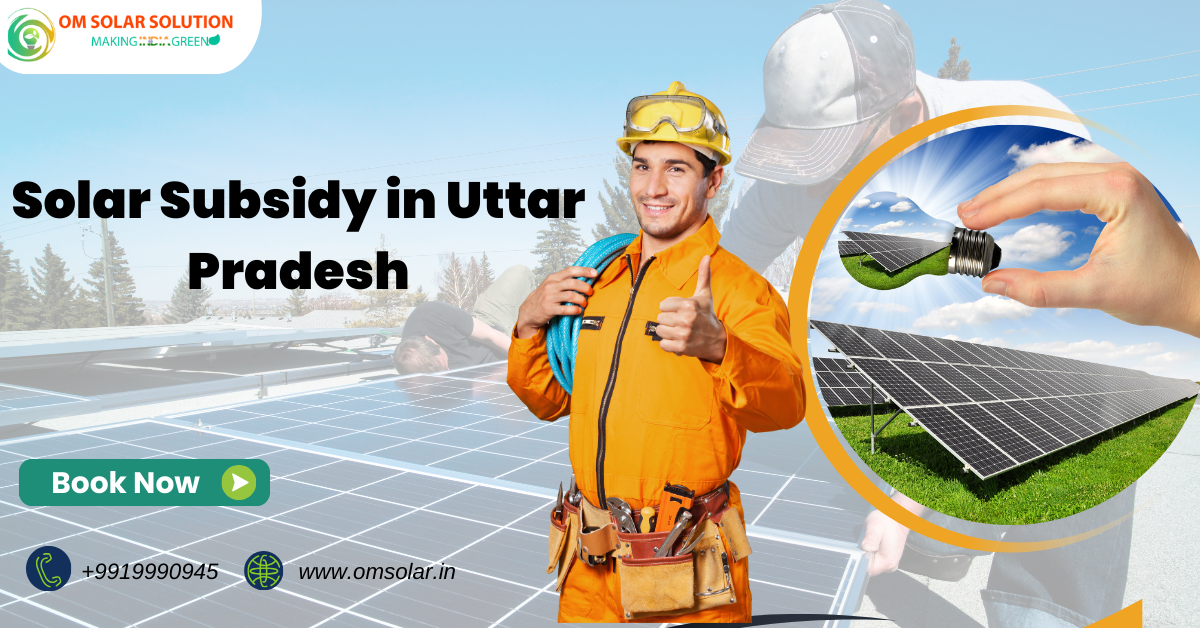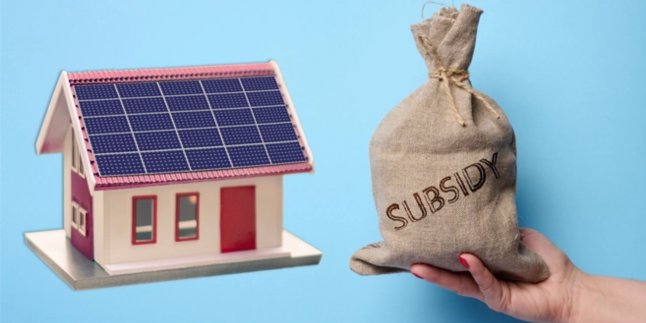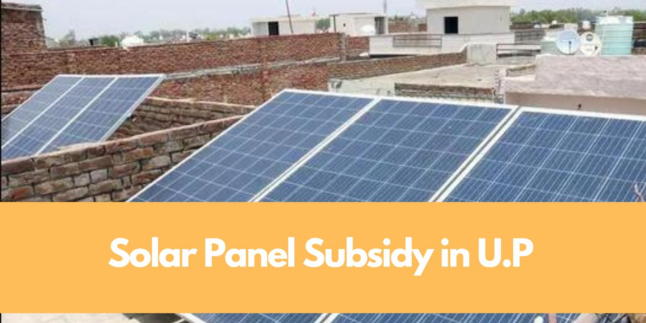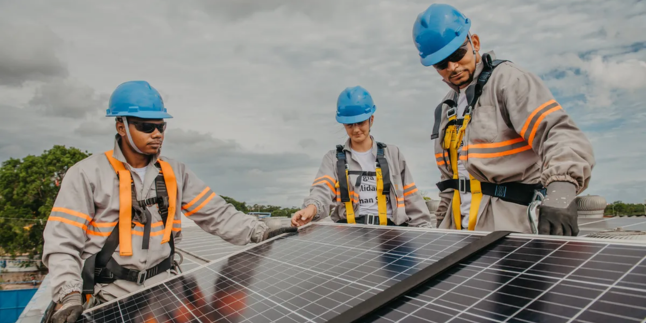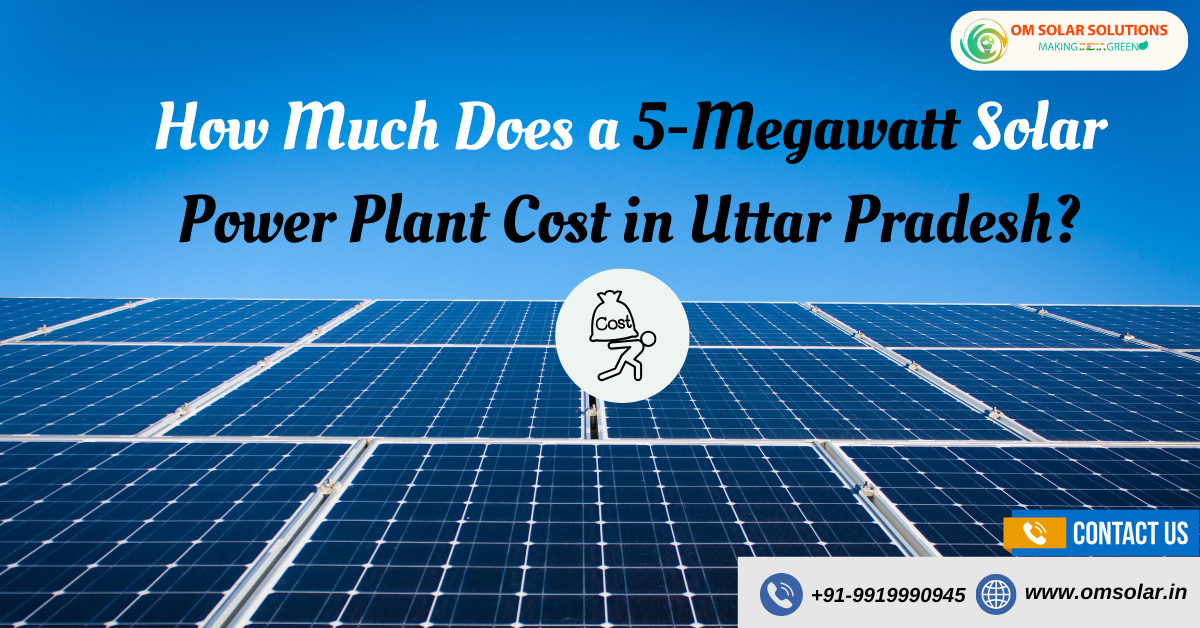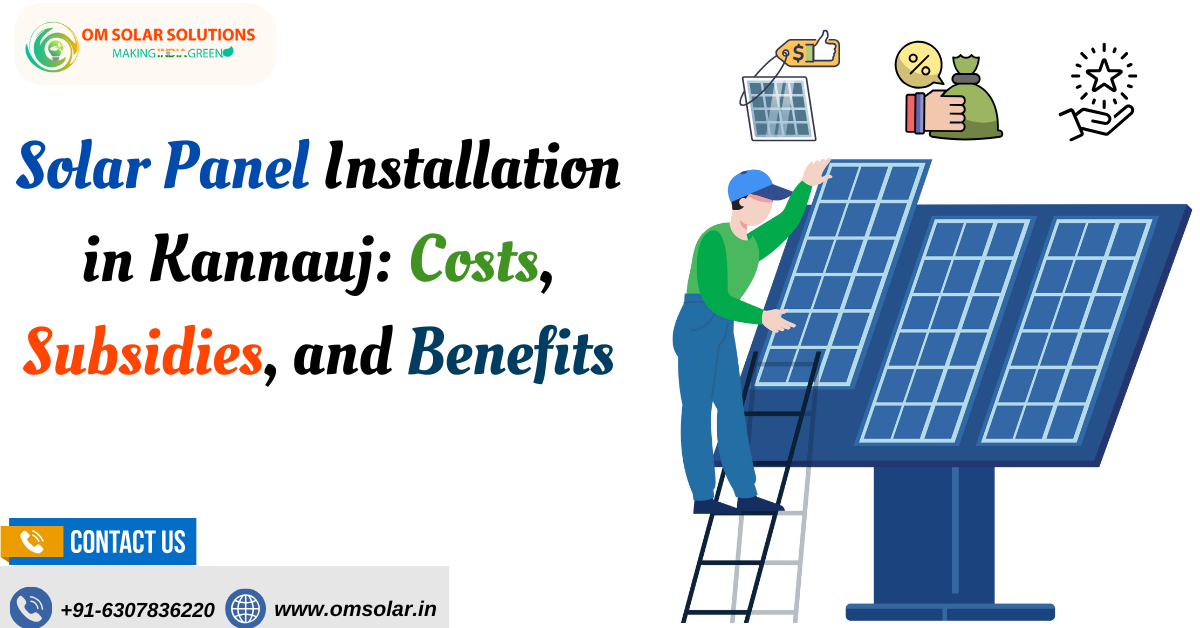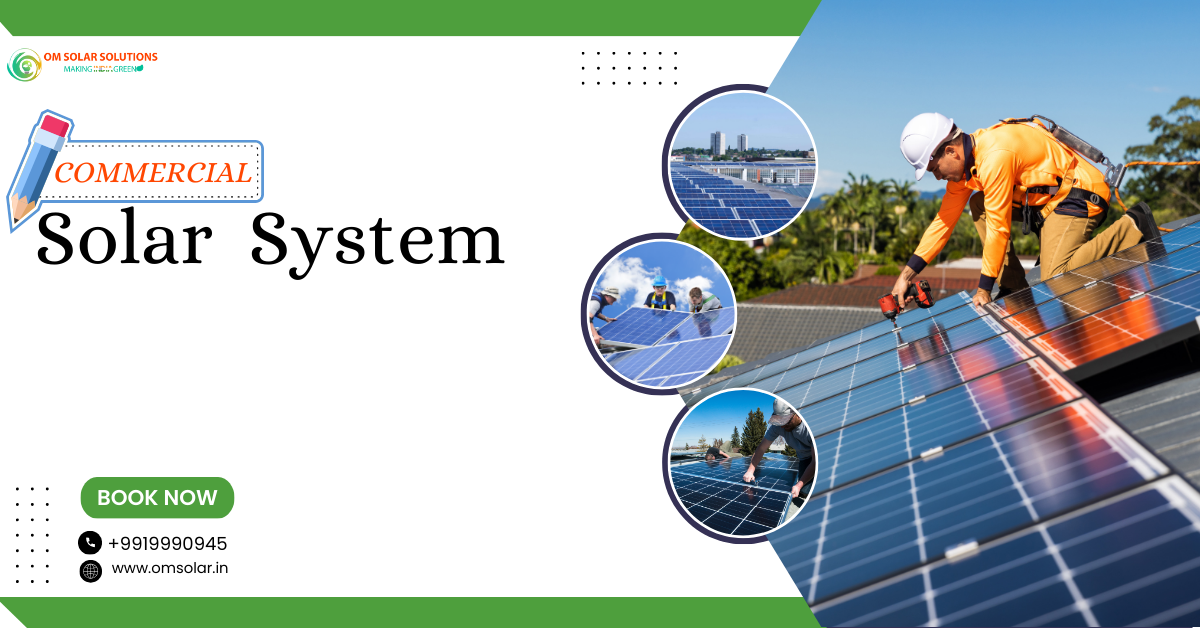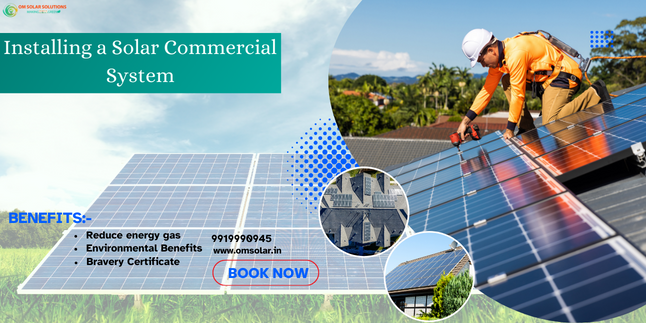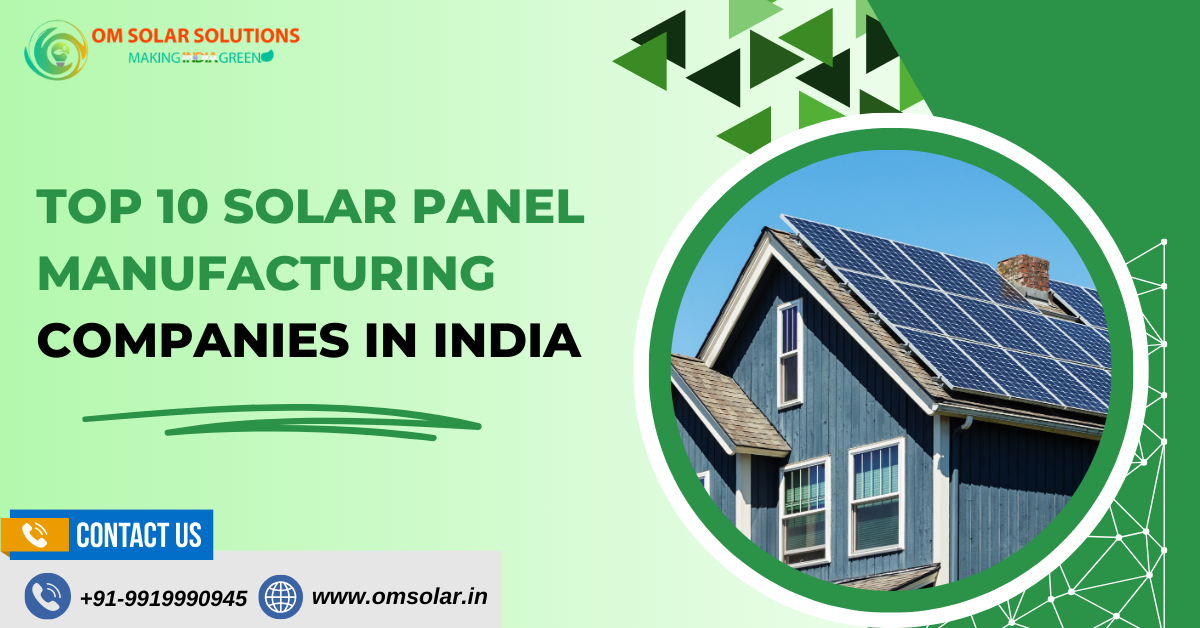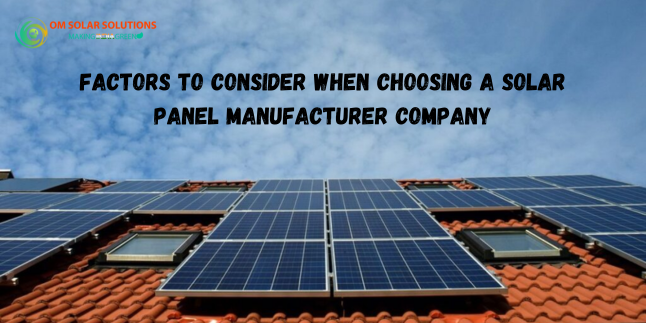Moving to green energy is no longer just a nice to have, but an imperative. Businesses and companies in India are looking to large-scale solar power plants to reduce costs and have less of an impact on the environment due to their growing energy needs. 2 MW Solar Power Plant is a great option for businesses, farms, and other organizations that need a long-term, cost-effective energy solution. Om Solar Solution is a renowned Solar Installation Company that works with people in Lucknow, Allahabad, Kanpur, Haryana, Varanasi, and Kannauj. We want your switch to solar energy to go smoothly and give you value for money. Find out how much does a 2 MW solar power plant cost, what it can be used for, and its return on investment (ROI).
What is a 2 MW Solar Power Plant?
A 2 megawatt solar power plant can make anywhere from 8,000 to 9,000 units of energy every day, depending on where it is kept and the weather. In a year, it can make about 2.5 million to 3 million units of electricity, greatly reducing your dependence on conventional energy sources. This much power could run a number of factories, business buildings, or even big farming projects. It has the same technology as smaller systems, but it’s made to handle more energy on a bigger size.
Also Read – 1 MW Solar Power Plants: Price, Specifications, And Complete Guide For Om Solar Solution
Key Components of a 2 MW Solar Power Plant:
- Solar Panels: Convert sunlight into electricity.
- Inverters: Convert DC electricity from panels into usable AC power.
- Mounting Structures: Hold panels at the right angle to capture maximum sunlight.
- Cables and Connectors: Transfer power efficiently across the system.
- Monitoring System: Analyses the plant’s functioning in real-time.
Cost of a 2 MW Solar Power Plant
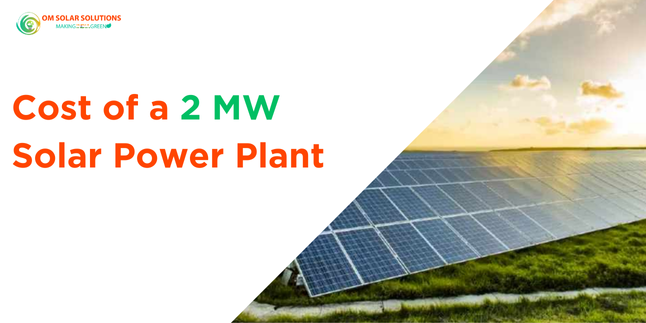
It is possible for the cost of creating a 2 MW solar power plant in India to range anywhere from ₹9 crore to ₹12 crore, depending on a variety of factors including the location, the quality of the equipment, and the cost of the land. The information that is presented below offers a comprehensive breakdown of the costs that are involved.
2 MW solar power plant cost & Components
| Cost Component | Approximate Cost (₹) | Details |
| Solar Panels | 6-7 crore | 60–70% of the total cost is covered; high-efficiency panels are suggested. |
| Inverters | 80 lakh – 1 crore | Converts direct current (DC) to alternating current (AC); essential for the utility of electricity. |
| Mounting Structures | 70-90 lakh | Panel supports made of steel or metal. |
| Land Acquisition | 30-50 lakh | Needs 5–6 acres; price depends on location. |
| Installation and Labour | 50-70 lakh | Includes wiring, panel, and structural assembly. |
| Cables, Monitoring System | 40-60 lakh | Small but crucial parts for efficiency. |
Key Factors Influencing The 2mw Solar Plant Cost
- Location: Areas with better solar irradiance (sunlight availability) require fewer panels to generate the same energy.
- Land Costs: Cities like Kannauj and Varanasi have cheaper rural areas than Kanpur and Lucknow.
- Equipment Quality: Although more expensive, premium panels and inverters are more efficient and durable.
Benefits of a 2 MW Solar Power Plant
2 MW Solar Power Plant is a good solution for energy sustainability and a smart business decision for industries, businesses, and the community.
1. Huge Financial Savings: Business electricity expenditures range from Rs. 1.5 crore to Rs. 2 crore per year with the two-Megawatt solar power plant. Energy is nearly free after the payback period of 4 to 6 years.
2. Positive Environmental Impact: About 3,000 to 4,000 tonnes of CO2 are saved every year by a 2 MW solar facility, making the environment cleaner and more stable.
3. Reliable Energy Supply: In areas with frequent grid failures, solar power provides uninterrupted power. Industries in remote areas or cities with inconsistent power supply benefit from this.
4. Low Maintenance Costs: Solar systems don’t need much upkeep. The main needs are cleaning the panels and repairing the inverter every so often, which costs about 10 to 15 lakh rupees a year.
Also Read – 100 kW Solar Plant Cost in India with Subsidy 2024: Price, Benefits, and ROI
Uses of a 2 MW Solar Power Plant
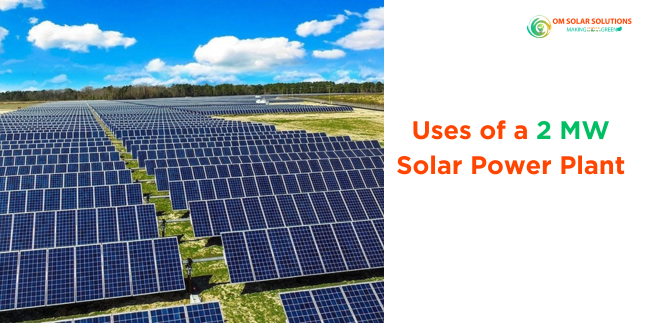
A 2 MW solar power plant is versatile and meets the energy needs of various sectors. It generates 8,000–9,000 units of electricity per day, making it ideal for medium to large applications. Some major uses:
1. Industrial Applications: Heavy machinery in factories in Kanpur and Lucknow can be powered, so they don’t have to rely on expensive grid energy.
2. Agriculture: Farmers in places like Varanasi and Kannauj can use solar power for water pumps, cold storage, and irrigation systems. This saves them money and makes sure they always have energy.
3. Commercial Complexes: Solar power is very helpful for hospitals, shopping malls, and offices because it lowers the amount of energy they use.
4. Community Energy Needs: A 2 MW solar plant can give power to small towns, housing complexes, or schools, which helps people become self-sufficient.
Return on Investment (ROI) for a 2 MW Solar Power Plant
Solar electricity is a great investment that pays off many times over the life of the plant. We know what the 2 megawatt solar power plant cost is; let’s take a look of ROI:
| Parameter | Details |
| Initial Investment | ₹9-12 crore |
| Annual Savings | ₹1.5-2 crore |
| Payback Period | 4-6 years |
| Lifespan of the Plant | 25-30 years |
| Total Savings | ₹40-50 crore (over the lifespan of the plant) |
Trends in Solar Energy for 2025
- AI-Driven Solar Monitoring: Advanced AI systems look at how well a plant is doing and offer ways to make it better.
- Battery Storage Integration:When you combine solar panels with batteries, you can get power even when it’s dark or at night.
- Bifacial Solar Panels: These panels get light from both sides, which makes them more efficient.
- Sustainable Manufacturing:Growing numbers of panels and systems are being made using environmentally friendly methods, which is good for companies that care about the environment.
- Floating Solar Farms: This technology puts solar panels on bodies of water, which makes it perfect for places where land is limited.
Government Incentives for Solar Power
There are several ways the Indian government encourages people to use solar energy:
- Central Financial Assistance (CFA): Gives up to 30% of the cost of certain solar projects.
- Accelerated Depreciation: Businesses can get tax breaks by saying that solar assets have accelerated depreciation..
- Net Metering: Allows power plant owners to sell back to the grid any extra electricity they have.
- State-Specific Benefits: In Uttar Pradesh, rooftop solar panels installation can get even more help, and in Haryana, people who use solar power don’t have to pay electricity duty.
Why Choose Om Solar Solution?
At our solar company in Kanpur we develop, build, and take care of solar power plants that are exactly what you need. We work in Lucknow, Allahabad, Kanpur, Haryana, Varanasi, and Kannauj, and each job benefits from our years of experience and knowledge of the area.
Our Services Include:
- Site Assessment: We look at the site to find the best place to install solar panels.
- Custom Design: Solutions that are made to fit your energy needs.
- Maintenance Support: Making sure that the plant is as efficient as possible for as long as it lasts.
- Affordable Pricing: Reasonable prices without lowering the quality.
Conclusion
Investing in a 2 MW solar power plant is a great way for businesses, industries, and communities to save money on energy costs and help build a more sustainable future. With a payback period of only a few years and long-term savings of up to ₹50 crore, it’s a choice that pays off both financially and environmentally.
At Solar EPC Company in Haryana we want to help you use the power of the sun. If you’re ready to make the switch, contact us today and let’s make tomorrow greener together!
Switch to Solar Energy Today!
FAQs
1. What is the land requirement for a 2 MW solar plant?
However, depending on the efficiency of the panels and the layout, around five to six acres of land is required.
2.How long can a 2 MW solar power plant last?
Solar panels have a lifespan of approximately 25-30 years and require very little maintenance.
3. Is it possible to secure financing for the solar project?
Indeed, loans are made available by banks and other financial organizations, and government subsidies can help reduce the initial cost of the loan.
4. What is the potential savings from a 2 MW solar plant?
You have the potential to save a maximum of ₹1.5-2 crore annually, with a cumulative savings of ₹40-50 crore during the lifetime of the plant.
5. Can you explain bifacial solar panels and what’s driving their popularity?
By capturing sunlight from both sides, bifacial panels can increase the amount of energy that is produced by up to 25 per cent.
